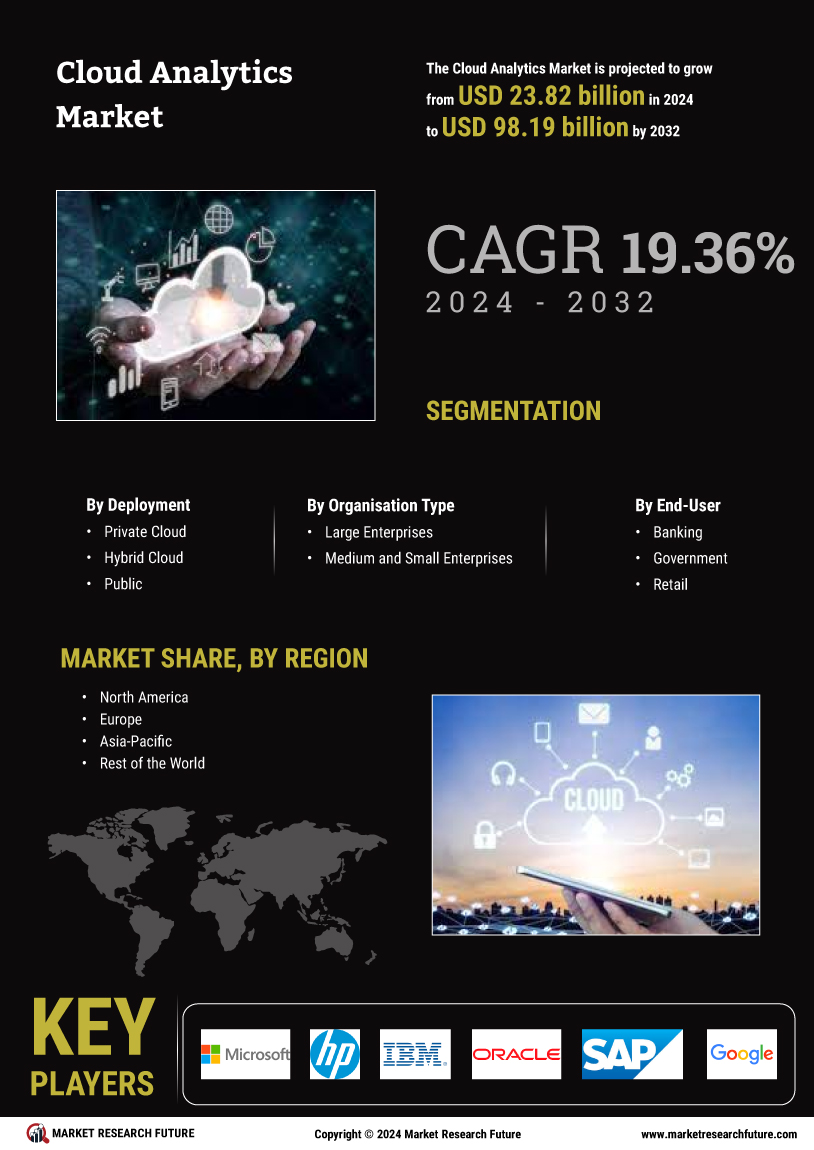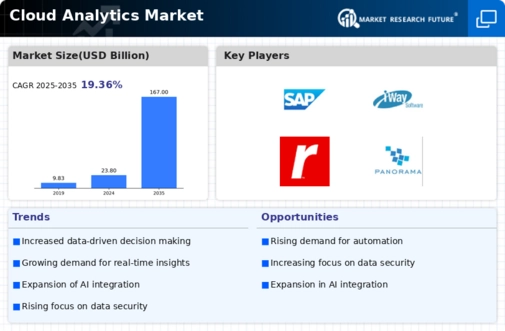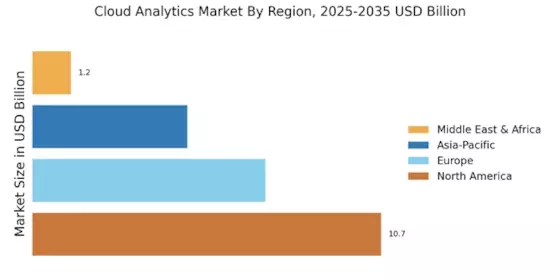Shift Towards Cloud-Based Solutions
The shift towards cloud-based solutions is a defining characteristic of the Cloud Analytics Market. Organizations are increasingly migrating their analytics operations to the cloud, driven by the need for scalability, flexibility, and cost-effectiveness. This transition is supported by the growing availability of cloud infrastructure and services, which facilitate seamless data integration and analysis. Market data indicates that the adoption of cloud analytics is expected to rise sharply, with many companies recognizing the advantages of reduced IT overhead and enhanced collaboration. As businesses seek to leverage the full potential of their data, the Cloud Analytics Market is likely to witness accelerated growth fueled by this shift towards cloud technologies.
Growing Importance of Data Governance
Data governance is emerging as a critical driver within the Cloud Analytics Market. As organizations accumulate vast amounts of data, the need for effective governance frameworks becomes paramount. This trend is underscored by the increasing regulatory requirements surrounding data privacy and security. Companies are prioritizing the establishment of robust governance policies to ensure compliance and mitigate risks. The market for data governance solutions is projected to grow significantly, reflecting the heightened focus on data integrity and accountability. By implementing comprehensive governance strategies, organizations can enhance their data management practices, thereby fostering trust and reliability in their analytics initiatives.
Integration of Advanced Analytics Tools
The integration of advanced analytics tools within the Cloud Analytics Market is becoming increasingly prevalent. Organizations are leveraging sophisticated analytics solutions to extract deeper insights from their data. This trend is fueled by the growing complexity of data environments and the need for enhanced analytical capabilities. The market for advanced analytics is expected to reach substantial figures, with estimates suggesting it could surpass several billion dollars in the next few years. Companies are investing in tools that facilitate predictive and prescriptive analytics, enabling them to forecast trends and optimize operations. This integration not only enhances decision-making but also positions organizations to gain a competitive edge in their respective industries.
Rising Demand for Real-Time Data Insights
The Cloud Analytics Market is experiencing a notable surge in demand for real-time data insights. Organizations are increasingly recognizing the value of immediate access to data for decision-making processes. This trend is driven by the need for agility in business operations, allowing companies to respond swiftly to market changes. According to recent data, the market for real-time analytics is projected to grow at a compound annual growth rate of over 30% in the coming years. This growth is indicative of a broader shift towards data-driven strategies, where timely insights are paramount. As businesses strive to enhance operational efficiency and customer satisfaction, the Cloud Analytics Market is poised to benefit significantly from this demand for real-time capabilities.
Emergence of Industry-Specific Analytics Solutions
The emergence of industry-specific analytics solutions is reshaping the Cloud Analytics Market. Organizations are increasingly seeking tailored analytics tools that address the unique challenges and requirements of their respective sectors. This trend is driven by the recognition that generic solutions may not adequately meet the specific needs of diverse industries. Market Research Future suggests that the demand for specialized analytics solutions is on the rise, with sectors such as healthcare, finance, and retail leading the way. By adopting industry-specific analytics, organizations can gain deeper insights and drive more effective decision-making processes. This focus on customization is likely to propel the growth of the Cloud Analytics Market as businesses strive for greater relevance and impact in their analytics endeavors.


















Leave a Comment